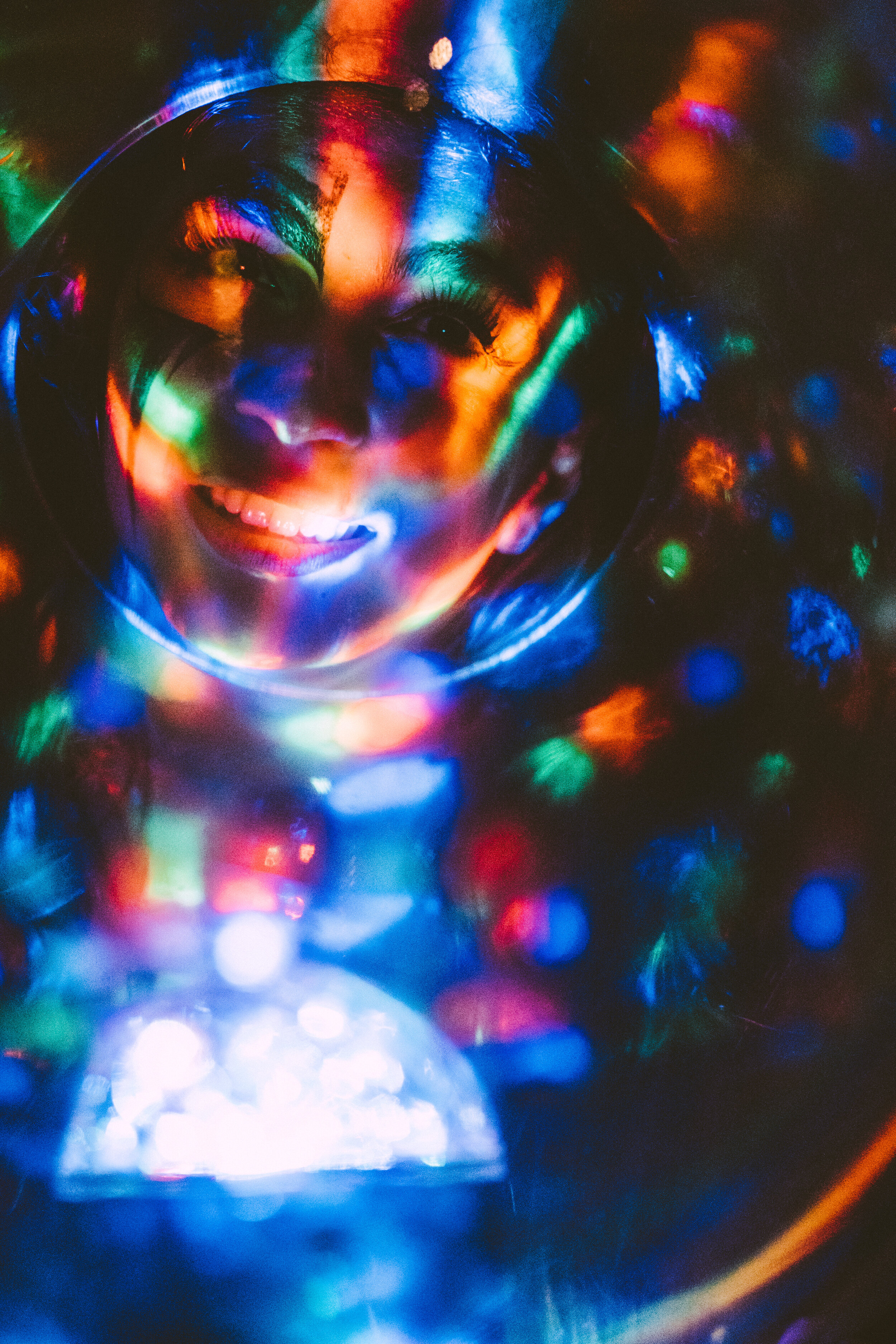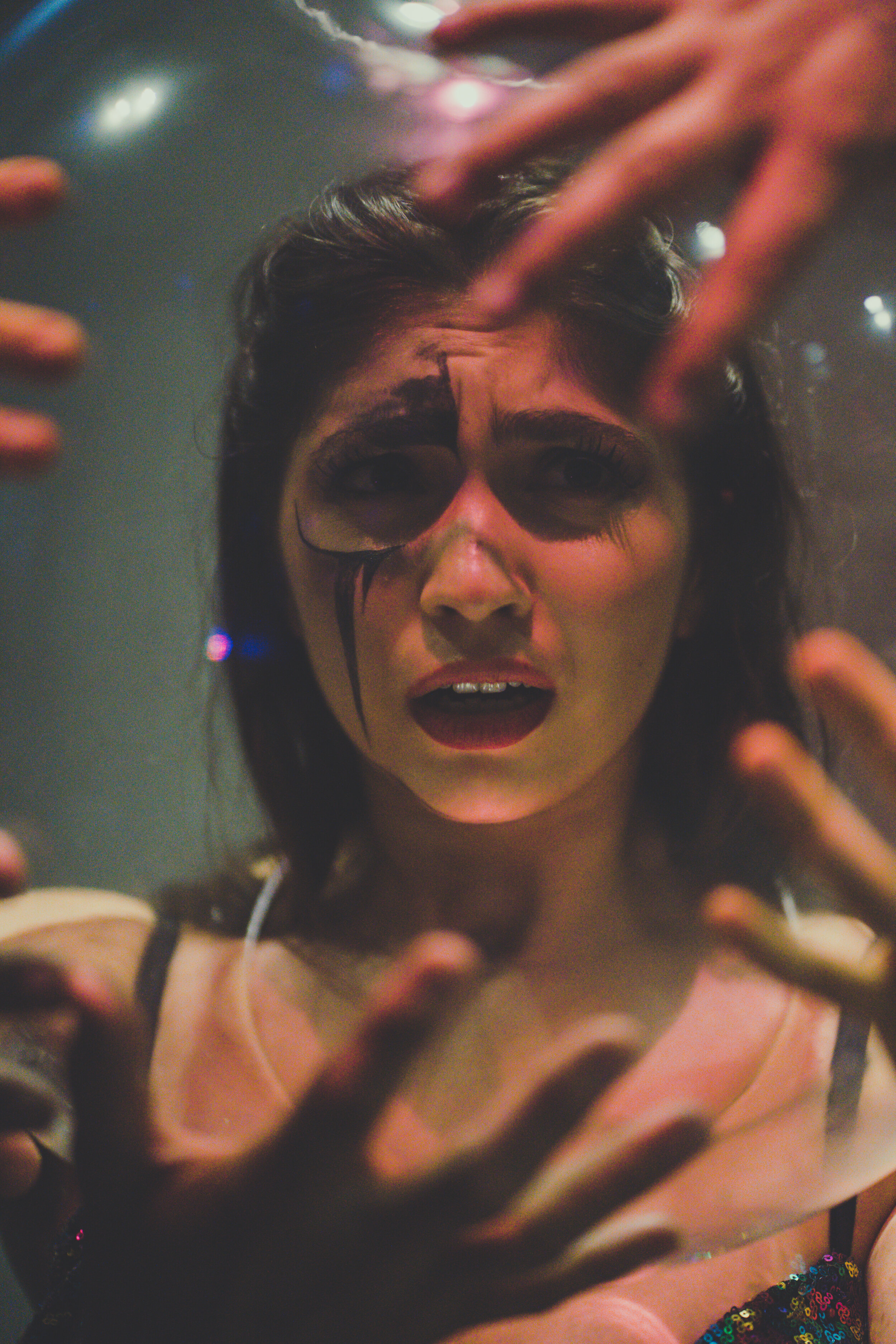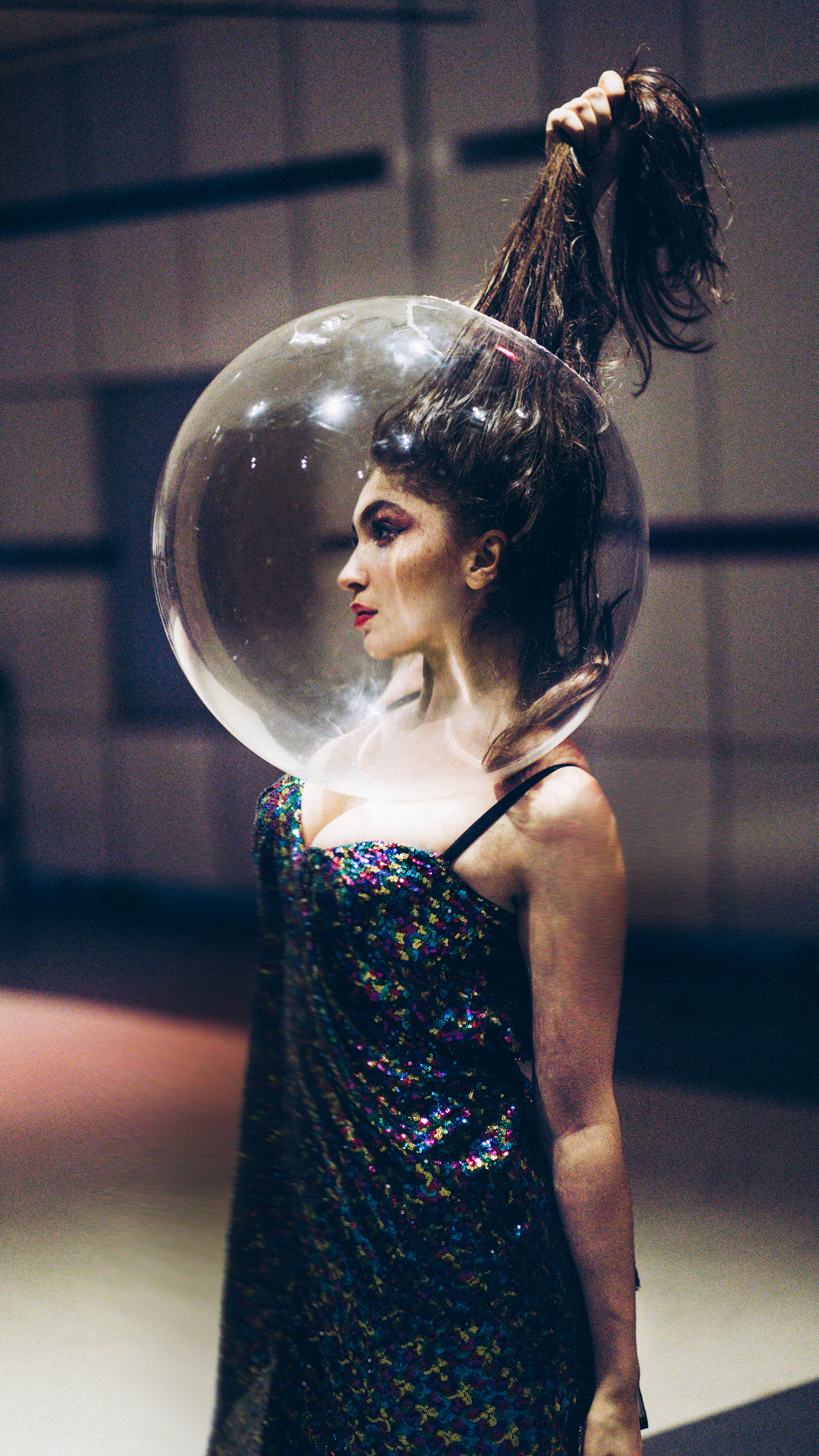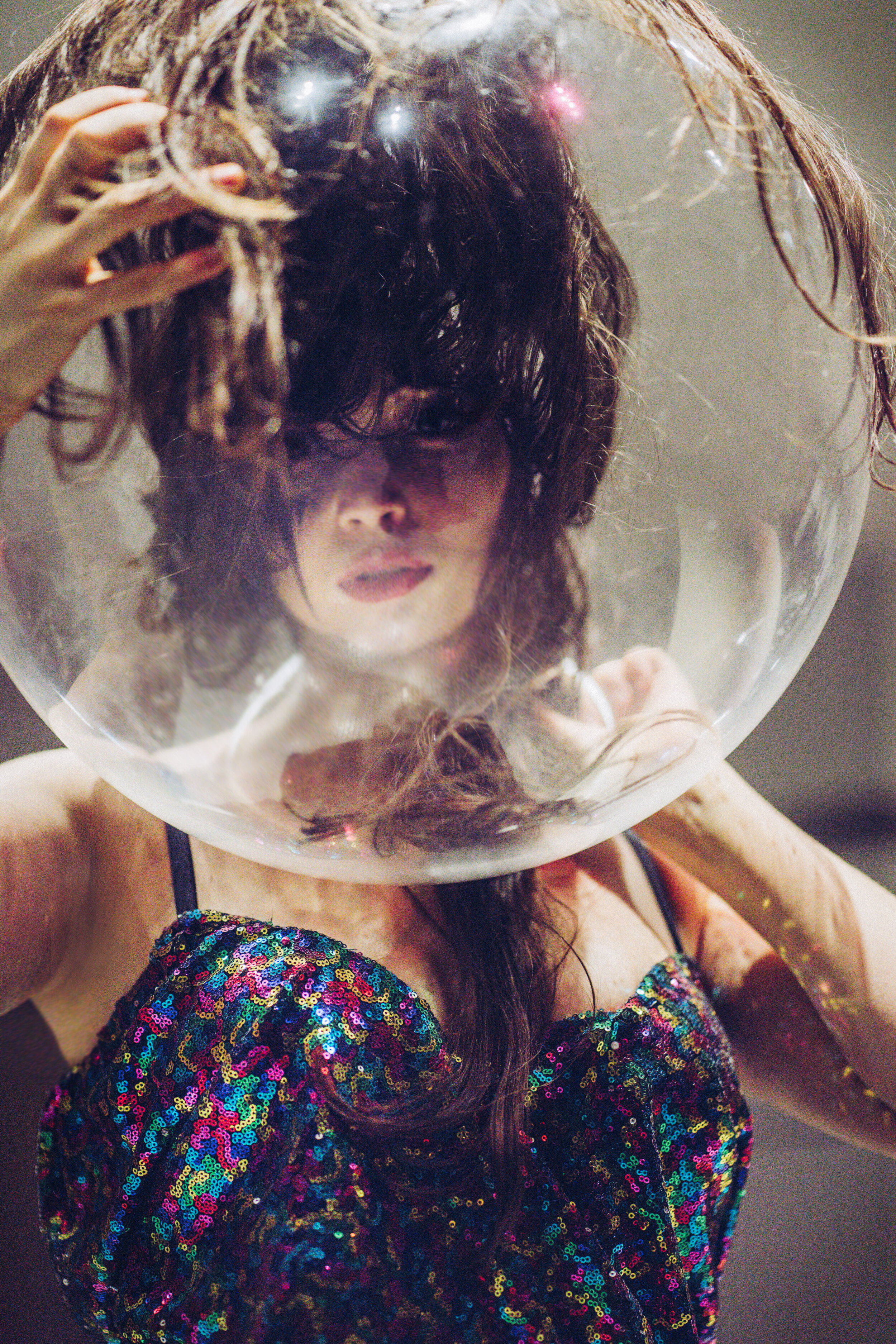
Touch me not
2019-2020
Garment designer, Makeup artist, Stage manager, Writer, Model and Image editor Siranush
Social distancing dress, 1x1 m iridescent sequin multicolor fabric, laser cut acrylic 60 cm-diameter bowl, remote control disco LED ball. Sponsored by MIT ACT Maker Space.
Exploration of others, surrounding, and the self at the age of social distancing.
Touch me not.
There are a lot of barriers for us to interact with the rest of the world. The most obvious one could be your skin or your brain. Nobody can touch your internal organs, nobody can read your thoughts.
However, today, at the age when biology is programmable and neurons will soon be hackable, how will we protect whatever we define as “self” from others.
And if an invasion happens before we even notice it. How do we then know which part is “us” and which part is “invasive”?
And how do thoughts and cells inside us today know where they belong and recognize each other? It is not surprising, that despite our understanding of biology and neuroscience — those questions still remain open.
Moreover, in physics, there exist much more profound debate regarding the nature of reality. Given that within the paradigm of Quantum Mechanics, there is always distinction between the observer and observable, and decision which reality do we live in depends on an event of observation of a few atoms of this universe — some suggest that there is something more profound to matter and space and time. Something that makes up those experiences and cognizances. And this still remains an open question, as you may guess…
Love me not.
And while there is a fear for other, there is also immense attraction.
What happens with notions like “love”, or even “sexual reproduction”, or even “sexes” themselves, once we are able to protect ourselves from “others’ invasions”.
Once we are sufficient within our little shells, once we do not need any influx of energy, matter or information. What will we become then?
Know me not.
Then, once we are fully disjoint, we become our own little self-enclosed universe.
And even though we may feel like we have everything in ourselves, there may be no way that anyone can reach to us. And, emotionally, we may think that there is nothing else beyond ourselves (like the “Point”, inhabitant of the zero-dimensional “Pointland” — if you tell it that there is something beyond it, it will consider your voice as its own and continue its blissful song about itself — from Flatland by Edwin Abbott Abbott).
Is that the reality of happy fools that we want to live in? A segregated simulation made up by ourselves for ourselves.
Wait…
Don’t we already live in it?








































Contributors.
Designer and Model Siranush Babakhanova.
Model Michael Alexander Skuhersky.
Photography by Valentin Edwards.



